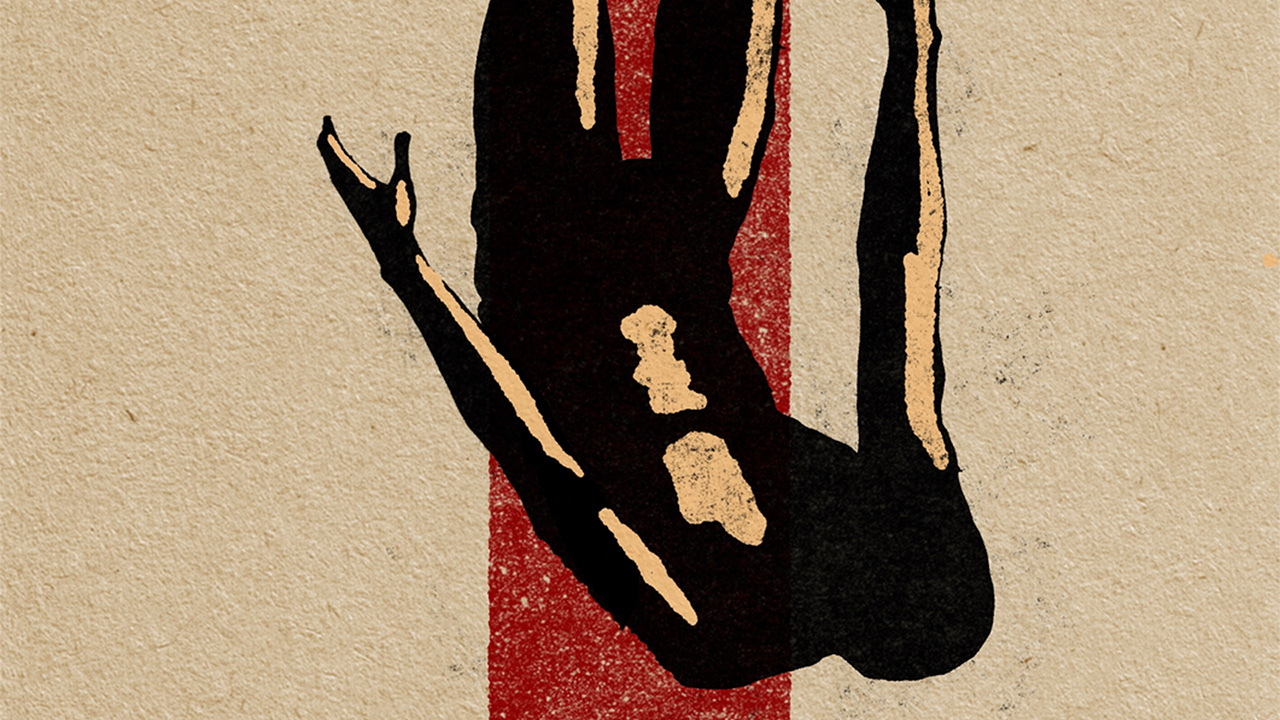This article originally appeared in our monthly email issue. Subscribe for full access to Common Good print and digital reads now for just $25 per year.
From the editor
During Black History Month, we make space to celebrate the contributions and cultures of people of African descent in America. And stories of the Black experience in American history are stories of the church, too.
America’s first African American Church was founded in Silver Bluff, South Carolina, in 1773. The founding of this church, writes Elesha J. Coffman in her new book, Turning Points in American Christianity, which released last week, was a turning point in the whole story of the American church. Black men and women, enslaved and free, “transformed the religion of their oppressors into a source of comfort and strength — a turning point not just for African American Christians but for Christianity as a global faith,” she writes.
The history of slavery in the United States is a difficult history in more ways than one. Difficult to hear, to teach, to understand, not to mention the glaring silences in the archives that make finding information on America’s enslaved difficult, sometimes impossible, to find. Yet the work of telling this history is vital, both as an attempt to restore a certain dignity to the memory of the people who came before us, especially the enslaved in America, and as a means of understanding Christianity in this country.
“For those of us who are American Christians, church history helps to explain how our faith took the shape that we inhabit,” Coffman writes in this February issue of Common Good Monthly. She highlights the moments in United States history that have made America’s Christianity what it is. The essay below, adapted from Coffman's book, explores the perseverance of saints of Black churches in America and the power of a firm faith. — Sarah Haywood, managing editor
American Christianity is distinctively American because it has an American history. Missiologist Andrew Walls describes this phenomenon as the outworking of the principles of incarnation and translation, noting that everywhere the gospel traveled, it was embodied and spoken anew. American Christianity is not the only enculturated form of the faith that exists; American Christianity is distinctively American just as Nigerian Christianity is distinctively Nigerian, Korean Christianity is distinctively Korean, and so on.
Distinctively American influences include racial and denominational diversity existing in tension with white, Protestant political dominance, as well as geographic expansiveness and an economic system that favors entrepreneurship. American Christianity cannot be reduced to these features, but neither can it be understood without considering them.
The Black church in America is a label with its own history. In 1903, the pioneering Black sociologist and activist W.E.B. Du Bois published a report on “The Negro Church,” which featured charts and local studies of churches in Baptist, AME, AME Zion, Methodist, Episcopal, and Presbyterian denominations. There are many Black American Christians, and Black-majority congregations, outside these denominations, and there are significant variations within and among them. Generally speaking, “the Black church” can be described as denominational (as opposed to independent or nondenominational), hierarchical, theologically conservative, and politically progressive. Black-majority churches in the United States, especially those whose membership includes a lot of more recent African immigrants, might be quite different.
The Perseverance of Saints
Few independent Black churches were established in the South before the Civil War. There were two orders of Black Roman Catholic nuns founded: the Oblate Sisters of Providence in Baltimore in 1829, and the Holy Family Sisters in New Orleans in 1842. There was also a Black Catholic parish established in 1858 near the border of what became the Union and the Confederacy: St. Augustine in Washington, D.C., known as the Mother Church of Black Catholics. Across most of the antebellum South, however, a typical Sunday morning found a church’s Black members, often enslaved, sitting in a restricted section of the local church, above or behind the seats reserved for its white members. Sometimes enslaved persons were forced to attend, but many came willingly, and it was not uncommon for the Black members of the congregation to outnumber the whites. Additionally, on a large plantation, the enslaver might have built a chapel where a white minister could preach periodically. Colossians 3:22, “Slaves, obey your earthly masters in everything,” was a common text at these services. The goal, for that enslaver, was to render those enslaved more compliant while demonstrating his own paternal “benevolence.” How could slavery be bad, enslavers argued, if it produced such Christian devotion?
In the early 1800s, church meetings looked different. Camp meetings were a key feature of what some historians call the Second Great Awakening. There, the mood was more relaxed, the seating arrangements more fluid, the music more rollicking, and the message apt to emphasize liberty rather than control. For whites, including poor whites marginalized by the planter aristocracy, camp meetings offered unprecedented opportunities for free assembly and a free response to the preacher’s invitation. This democratization of faith resonated with the (incremental) democratization of American politics in the early republic. Enslaved persons at the camp meetings breathed in these ideas and practices.
Browbeaten by sermons on obedience, enslaved persons might well have rejected Christianity entirely, but instead many mined it for stories that gave them hope. The exodus narrative was especially meaningful, as in the shout song “Pharaoh’s Host Got Lost”:
Moses, Moses lay your rod
In that Red Sea.
Lay your rod, let the children cross
In that Red Sea.
Ol’ Pharaoh’s hos’ got los’, los’, los’,
Ol’ Pharaoh’s hos’ got los’,
In that Red Sea.
They shout when the hos’ got los’, los’, los’,
They shout when the hos’ got los’,
In that Red Sea.
The Long Movement Toward Freedom
After Nat Turner’s rebellion, white leaders across the South panicked. New laws targeted Black churches, Black preachers, and anyone who would teach enslaved persons to read or write. In North Carolina, for example, an enslaved or free Black caught preaching could be subject to 39 lashes. Enslavers who were previously indifferent to the spiritual condition of those enslaved took a sudden and controlling interest. And at the same time, white evangelists were mobilized to teach a tamer form of Christianity. Enslavers pushed back against the freedom of the faith they claimed.
Black Christianity in America was forced deeper into hiding. But the church was deeply connected to the pursuit of freedom. Secrecy mattered because those caught meeting in the “hush harbor” faced flogging. Secrecy was especially important if the gathering was, as enslavers feared, connected to the pursuit of physical as well as spiritual freedom. Coded messages in songs might alert fellow enslaved persons to a prayer meeting or an escape attempt. The same sign that pointed to the hush harbor, such as a broken branch, might also mark the Underground Railroad route to the North. And nicknamed “Moses,” Harriet Tubman, whose work led dozens to freedom in the Underground Railroad — though Southern planters offered a $40,000 reward for her capture, dead or alive — moved unseen. Her recorded last words echoed Jesus: “I go to prepare a place for you.” Like many civil rights leaders across the years, she was more celebrated than supported.
Stories of a Firm Faith
Of all the striking aspects of antebellum Black Christianity, perhaps what is most amazing is that it developed at all. Christianity was the religion of the oppressors, who used it very consciously as a tool of oppression. Yet Black Americans found depths of hope and consolation in the faith that their white enslavers missed entirely. By the dawn of the twenty-first century, Black Americans remained the most religiously committed group in the United States, significantly more likely than any other group to attend church weekly, pray daily, and express absolute certainty that God exists. Their faith, born in turmoil, held
On January 1, 1808, Rev. Absalom Jones (1746–1818) preached a thanksgiving sermon at St. Thomas’s African Episcopal Church in Philadelphia. He chose as his text Exodus 3:7–8: “And the Lord said, I have surely seen the affliction of my people which are in Egypt, and have heard their cry by reason of their taskmasters; for I know their sorrows; and I am come down to deliver them out of the hand of the Egyptians.” Jones’s concluding prayer, excerpted here, expressed joy for the end of the foreign slave trade while recognizing the continuing travails of his people:
Oh thou God of all the nations upon the earth! We thank thee, that thou art no respecter of persons, and that thou hast made of one blood all nations of men. We thank thee, that thou hast appeared, in the fulness of time, in behalf of the nation from which most of the worshipping people, now before thee, are descended. We thank thee, that the sun of righteousness has at last shed his morning beams upon them. Rend thy heavens, O Lord, and come down upon the earth; and grant that the mountains, which now obstruct the perfect day of thy goodness and mercy towards them, may flow down at thy presence. Send thy gospel, we beseech thee, among them. May the nations, which now sit in darkness, behold and rejoice in its light. May Ethiopia soon stretch out her hands unto thee, and lay hold of the gracious promise of thy everlasting covenant.
Adapted from Turning Points in American Church History by Elesha J. Coffman, ©2024. Used by permission of Baker Academic.





